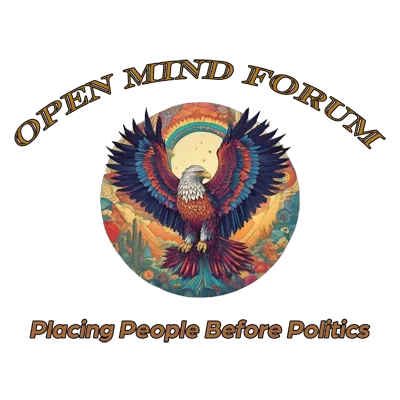Influence Beyond Belief in His Deconstructionist Philosophy
Derrida and Judaism in the Context of Identity and Philosophy
Derrida and Judaism focuses on a concise understanding of his approach to deconstruction as a philosophy that found its footing in his Jewish heritage while eschewing the observance. Finding the ethical in his heritage and experiences with deeply disturbing antisemitism during World

War II and his experience as a separated outsider is a consistent theme of being other in his own work.
Derrida and Judaism: Philosophical Influence
Jacques Derrida’s philosophy grapples with his roots in Judaism, even as he rejected religious affiliation. His youth in Algeria, spent as a Jewish outsider under French colonialism, deeply shaped his outlook. Derrida lived a life of multiplicity: a Jewish child in a Muslim-majority society, later a French professor of philosophy in a predominantly Christian world. The theme of being the “other” pervaded his work, creating a natural bridge between Derrida and Judaism as he formed deconstruction—a philosophy that dismantles fixed meanings to expose ambiguity and multiplicity in language. His approach to writing establishes the nature of subjectivity as an inheritance earned through is otherness.
Derrida’s concept of différance—a deliberate misspelling of “difference” to imply a meaning endlessly deferred—resonates with his Jewish background. The Jewish tradition encourages endless questioning and interpretation, especially in the Talmud, a text filled with debates and evolving meaning. By deconstructing language, Derrida insisted that meaning was not given by a creator but rather shaped by the observer. In this way, Derrida and Judaism converge in their view of meaning as fluid and interpretive rather than static and definitive.
Derrida also found ethical imperatives within Judaism that he integrated into his philosophy, such as the value of responsibility toward others, a theme that emerges consistently in his later work on hospitality and forgiveness (Derrida, 1999; Macksey, 2001). It is clear that some of this work was influenced by his friend Emmanuel Levinas and his instance that the crux of ethics was the face of the other allowing for a glimpse of the infinite Other. Unlike Levinas, Derrida chose to deny affiliation to Judaism even as he drew from his experience as a Jew in occupied France during World War II.
Derrida and Judaism: Ethical Responsibility to “The Other”
Derrida’s later works, such as Of Hospitality (2000), illustrate how he transformed Jewish ethical concepts into secular philosophy. In Judaism, ethical responsibility toward others emphasizes care for strangers, widows, and the marginalized. Derrida expanded on this by

emphasizing openness toward “the other” in his philosophy. Unlike his predecessors, Derrida proposed a radical hospitality—a concept that demands we welcome others without expecting mutual understanding or full assimilation.
One powerful example of Derrida’s ethical engagement with Judaism comes in his exploration of the Hebrew notion of tikkun olam, or “repairing the world.” Though Derrida seldom referenced tikkun olam directly, his secularized emphasis on justice, ethics, and the “infinite responsibility” to others aligns with this Jewish value (Kearney, 2004). Derrida’s ethical focus created an intellectual Judaism: a philosophy rooted in questioning, ambiguity, and deferral rather than concrete religious doctrine.
Derrida and Judaism: The Legacy of Deconstruction and Jewish Thought
Derrida’s deconstruction aligns closely with Jewish interpretative traditions, especially in its refusal to assert fixed truths. Judaism, much like Derrida’s philosophy, views truth as something complex, layered, and often elusive. Derrida’s writings constantly deferred meaning, pushing against conventional understandings. This echoes the Jewish interpretive principle that sacred texts require ongoing debate and reinterpretation to remain relevant. Scholar Susan Handelman noted that Derrida’s approach aligns with Jewish “hermeneutics of ambiguity,” where meaning is always in motion, never settled (Handelman, 1982). Through deconstruction, Derrida showed that meaning lies not with the creator (whether God or author) but with the observer’s interpretation.
Derrida and Judaism: Rejection of Dogma, Retention of Heritage
While Derrida rejected traditional religious dogma, he retained a secularized connection to his Jewish heritage. He preferred to explore Judaism as an intellectual inheritance rather than as a faith system, engaging with it through ethical thought rather than ritual. This secular approach created a complex identity, where Derrida neither abandoned nor fully embraced Judaism but transformed it into philosophical inquiry. Through deconstruction, Derrida crafted a unique way of thinking that resonates with the intellectual currents of Jewish philosophy while remaining fiercely individualistic (Mackey, 2001).
Derrida and Judaism, therefore, represent more than a philosopher’s heritage; they represent a philosophical lens. Derrida embraced the questioning, ethical imperatives, and interpretive openness of Judaism while resisting the boundaries of religious practice. He thus offered a model of Jewishness as intellectual inquiry, engaging readers to question absolute truths and to view every concept, from language to faith, as subject to reinterpretation.
Sources Cited
– Derrida, J. (1999). Adieu to Emmanuel Levinas (P. Kamuf, Trans.). Stanford University Press.
– Derrida, J. (2000). Of Hospitality (R. Bowlby, Trans.). Stanford University Press.
– Handelman, S. (1982). The slayers of Moses: The emergence of Rabbinic interpretation in modern literary theory. State University of New York Press.
– Kearney, R. (2004). On Paul Ricoeur: The owl of Minerva. Ashgate Publishing.
– Macksey, R. (2001). The legacy of Jacques Derrida. Johns Hopkins University Press.
– Mackey, M. (2001). Jewish philosophy and the classical world. University of Chicago Press.
Suggestions for Future Reading
Handelman, S. (1982). The slayers of Moses.
This work explores Rabbinic traditions and their parallels with modern interpretive methods, including Derrida’s.
Caputo, J. D. (1997). The prayers and tears of Jacques Derrida.
Caputo examines Derrida’s complex views on faith, ethical responsibility, and deconstruction.
Wolfreys, J. (2007). Derrida: A guide for the perplexed.
This accessible guide clarifies Derrida’s deconstructionist ideas and his ambivalent relationship with religion.
Critchley, S. (2001). Continental philosophy: A very short introduction.
Critchley provides a broad overview of Continental philosophy, including Derrida’s contributions and philosophical background.
Bennington, G. (1993). Derrida.
A deep look into Derrida’s thought, his methods, and the origins of his key concepts in deconstruction.
Peeters, B. (2013). Derrida: A biography.
This biography gives a comprehensive view of Derrida’s life, including his Jewish background and its subtle influence on his thought.
Ricoeur, P. (1992). Oneself as another.
Ricoeur’s work on identity and ethics provides a useful parallel to Derrida’s philosophy of responsibility to the “other.”
Cohen, R. (2001). Ethics, exegesis, and philosophy: Interpretation after Levinas.
Cohen investigates the ethical philosophy of Levinas, another thinker profoundly influenced by Jewish thought.
Derrida, J. (2000). Of hospitality.
Derrida’s own writings on hospitality provide insight into his ethical philosophy and his relationship to the concept of “the other.”
Disclaimer: The images and videos in this post are AI-generated creations, intended purely for illustrative and conceptual purposes. They are not real-life representations and should not be interpreted as such. Their sole purpose is to offer a visual means of exploring the topics discussed in this post.




